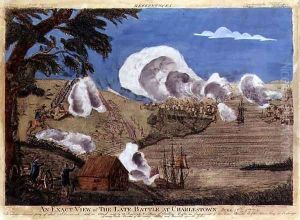Bernard Romans Paintings
Bernard Romans was a Dutch-born navigator, surveyor, cartographer, naturalist, engineer, soldier, promoter, and writer who spent much of his career in the service of the British colonies in North America, particularly in the southern regions. Born around 1720 in the Netherlands, he moved to England as a young man and subsequently to the American colonies. His life was marked by a wide array of interests and contributions, particularly in the fields of cartography and natural history.
Romans' most notable work was his mapmaking. He is perhaps best known for his maps of Florida and the Gulf Coast, which were highly regarded for their accuracy at the time and were used extensively for navigation and settlement purposes. In the 1760s, he was commissioned by the British government to survey the coast of Florida, which had recently become a British possession following the end of the Seven Years' War and the Treaty of Paris in 1763. His maps were significant contributions to the colonial efforts to understand and manage the new territories.
In addition to his cartographic work, Romans wrote a book titled 'A Concise Natural History of East and West Florida' which, despite its title, was not just a natural history but also contained considerable information about the native inhabitants, the climate, and the potential for economic development of the region. This book became an important resource for those interested in the American South and its potential for colonization and settlement.
Beyond his work as a cartographer and naturalist, Romans was also involved in the American Revolutionary War. He had a complex relationship with the American Revolution, initially serving the British cause before switching allegiance to the American side. He served as an engineer and participated in the construction of defenses for the Americans. Romans' life after the war is less well documented, and details about his activities are sparse. He is believed to have died around 1784, but the exact circumstances of his death are not well recorded. His legacy, however, endures through his contributions to cartography and his detailed observations of the flora, fauna, and peoples of the southeastern United States during the colonial period.
